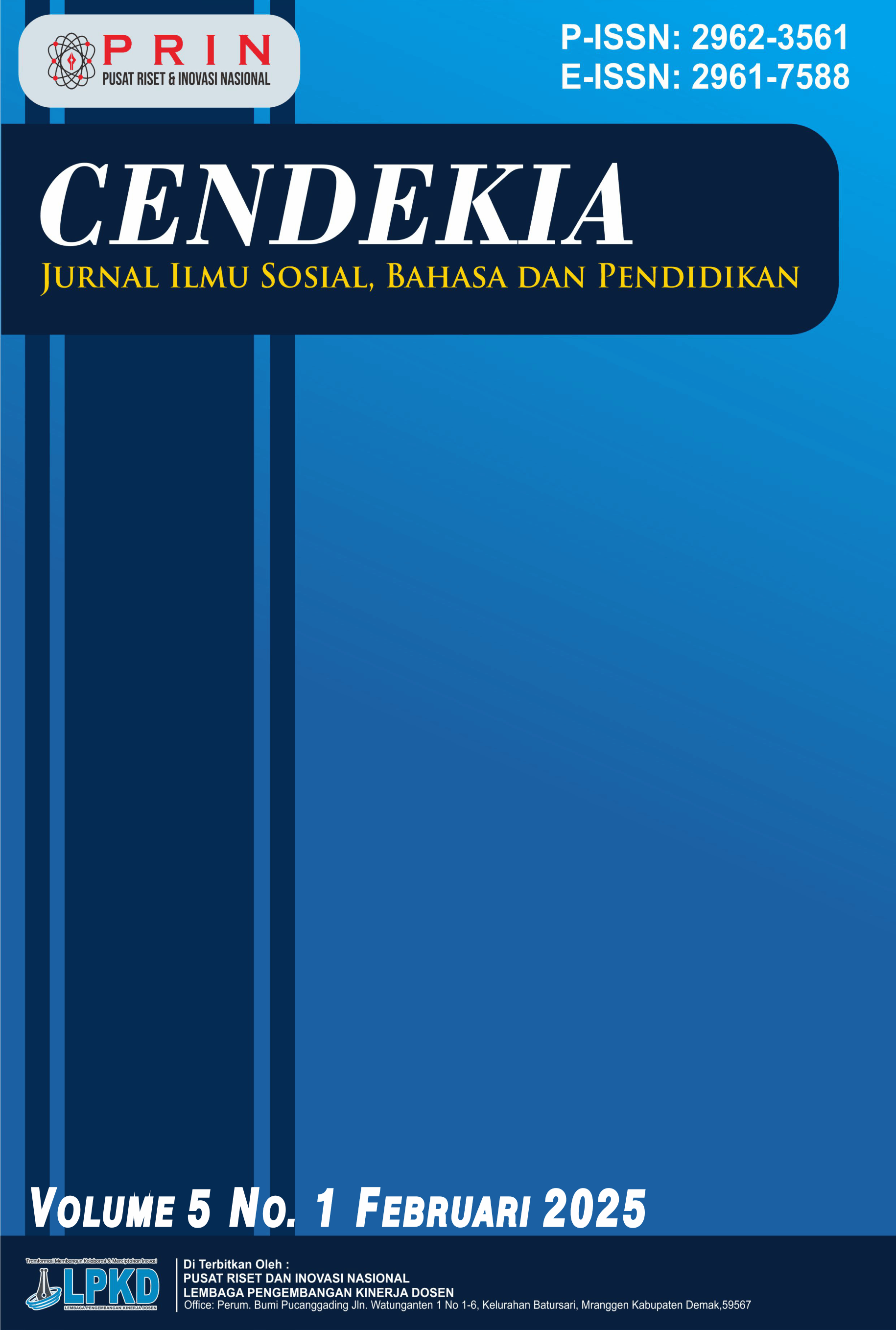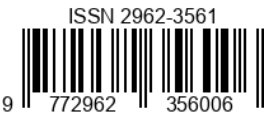The Effectiveness of Audio- Lingual Method on Students Pronunciation Performance
DOI:
https://doi.org/10.55606/cendekia.v5i1.3525Keywords:
Effectiveness, Application of audio-lingual methods in secondary schools, Pronunciation, English Language Learning, Student PerformanceAbstract
This study aims to determine the effectiveness of Audio-Lingual Method (ALM) on students' pronunciation performance. Proper pronunciation is one of the important aspects in foreign language learning, especially English, which is often a challenge for students. This study was conducted using a quasi-experimental design, in which two different groups of students were given different treatments: one group was given instruction using the Audio-Lingual method, while the other group was given the conventional method. Data was collected through pronunciation tests conducted before and after the intervention. The results showed a significant improvement in the pronunciation performance of students who received treatment with the Audio-Lingual method compared to the control group. The findings support the hypothesis that the Audio-Lingual method is effective in improving students' pronunciation skills. This study makes an important contribution to language teaching, particularly in improving students' pronunciation skills through a more structured and repetitive approach.
Downloads
References
A.P. Gilakjani. (2011). A study on the situation of pronunciation instruction in ESL/EFL classrooms. Journal of Studies in Education, 1(1), 1-15.
Anisah, K., Lubis, N., & Lubis, Y. (2023). EFL students' perspective in learning phonetic symbols. Pustaka: Jurnal Bahasa Dan Pendidikan, 3(4), 137-143.
Anisatul, F. (2023). Implementasi metode audio lingual dalam peningkatan kemampuan pronunciation siswa kelas VIII. Journal of Education Research, 4(1), 362-371.
Aprianto, A., Ritonga, M., Marlius, Y., & Nusyur, R. (2020). The influence of using audio-lingual method on students’ speaking skill in Madrasah Diniyah Takmiliyah Awwaliyyah. Journal of Language Teaching, Linguistics, and Literature, 3(2).
Bajri, A. (2018). Improving students’ pronunciation using repetition drill technique for the students of grade XI Natural Science MAN 1 Yogyakarta. English Language Teaching Journal, 7(6), 428-436.
Brown, D. (2001). Teaching by principles: An interactive approach to language pedagogy. Longman.
Christianti, M. (2015). Kajian literatur perkembangan pengetahuan fonetik pada anak usia dini. Jurnal Pendidikan Anak, 4(1).
E. Liang. (2014). Pronunciation of English consonants, vowels, and diphthongs of Mandarin-Chinese speakers. Studies in Literature and Language, 8(1), 62.
Eripuddin, E., & Kasyulita, E. (2019). The effectiveness of audio-lingual method on students’ pronunciation ability at third semester in the University of Pasir Pengaraian. International Journal on Language, Research and Education Studies, 3(3), 431-437.
Gilakjani, A. P. (2016). English pronunciation instruction: A literature review. International Journal of Research in English Education, 1(1), 1-6.
Hancock, M. (1994). On using the phonemic script in language teaching. Retrieved from http://hancockmcdonald.com.
Hancock, M. (1995). Pronunciation games. Cambridge: Cambridge University Press.
Hidayati, K. H. (2016). Using audio lingual method to improve students' pronunciation ability of Darul Mahdiah Private School. ELLITE: Journal of English Language, Literature, and Teaching, 1(1).
Lintunen, P. (2004). Pronunciation and phonetic transcription (Doctoral dissertation). University of Turku, Finland.
Mompean, J. A., & Fouz-Gonzalez, J. (2021). Phonetic symbols in contemporary pronunciation instruction. RELC Journal, 52(1), 155-168.
Mulatsih, D. (2018). Pronunciation ability by using English song in Indonesian students of Unswagati Cirebon. Academic Journal Perspective: Education, Language, and Literature, 2(2), 294-299.
Nshimiyimana, E., & Bazimaziki, G. (2024). Effectiveness of audio-lingual method to enhance students’ English speaking and listening proficiency: The case of selected primary school in Nyagatare district. The Rwandan Journal of Education, 7(2).
Otlowski, M. (1998). Pronunciation: What are the expectations? The Internet TESL Journal, 5(1).
Richards, J. C., & Rodgers, T. S. (2014). Approaches and methods in language teaching. Cambridge University Press.
Samawiyah, Z., & Saifuddin, M. (2016). Phonetic symbols through audio-lingual method to improve the students’ listening skill. Dinamika Ilmu, 16(1).
Schmitt, N., & Rodgers, M. P. (Eds.). (2002). An introduction to applied linguistics. London: Arnold.
Shamim, A., Shams, A. S., & Azhar, B. (2024). Unlocking pronunciation proficiency: The significance of English phonetic in language learning. Vol. 8(1).
Sidabutar, U. (2021). The effect of the study lingual method on students’ speaking achievement. Jurnal Suluh Pendidikan (JSP), 9(1).
Sirait, A. P., Manalu, D. B., & Siahaan, B. L. (2024). The effect of using audio lingual method in the listening comprehension of grade ten students of SMA Swasta Kampus Nommensen Pematang Siantar. Jurnal Ilmu Pendidikan dan Sosial (JIPSI), 2(4).
Suryanti, N. (2017). The effect of audio-lingual method toward students’ pronunciation of prosodic features at the eleventh grade students of SMA Negeri 1 Bungaraya Siak.
Tench, P. (1992). Phonetic symbols in the dictionary and in the classroom. In A. Brown (Ed.).
Tika, A. (2019). Improving the student's pronunciation through drilling technique at seventh grade at MTs Al-Hikmah Darussalam Bagan Batu in academic year 2018/2019 (Doctoral dissertation). Universitas Islam Negeri Sumatera Utara.
Tsang, A. (2022). Effects of narrow listening on ESL learners’ pronunciation and fluency: An ‘MP3 flood’ programme turning mundane homework into an engaging hobby. Language Teaching Research, 26(3), 434-454.
Underhill, A. (2005). Sound foundations (3rd ed.). London: Macmillan Publishers Ltd.
Vinasih, R. R. (2019). Teaching learning speaking by using audio lingual method to young learners.
Downloads
Published
How to Cite
Issue
Section
License
Copyright (c) 2024 CENDEKIA: Jurnal Ilmu Sosial, Bahasa dan Pendidikan

This work is licensed under a Creative Commons Attribution-ShareAlike 4.0 International License.








